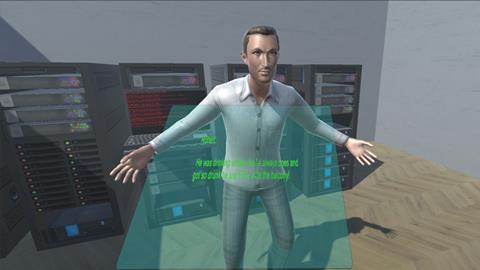Artificial intelligence trailblazers in law firms must look to other industries for ideas.
Last year was big for legal technology. The hot topic was artificial intelligence (AI), which moved from ‘media hype’ to mainstream acceptance. Respondents to Briefing magazine’s Legal IT Landscapes survey overwhelmingly agreed that machine learning/AI technology would have the biggest impact on legal services in terms of efficiency and competitiveness within the next five years, and that within 10 years it was likely to produce a significant reduction in fee-earning staff.
This feature highlights the legal IT consultancy challenge presented by legal AI implementation and looks at how virtual reality (VR), another of 2016’s breakthrough technologies, is being applied to legal education.
Although AI can boost productivity and reduce costs, it is not a one-size-fits-all solution and it is not applicable to all aspects of legal services. Like big data analysis, because AI is scalable it is most effective in the volume processing space. Nor is it an instant fix – most legal AI generally incorporates machine learning, which requires a commitment of time and resources to clean up the data and train the system.
This goes some way towards explaining why AI’s speedy and exponential take-up was led primarily, but not exclusively, by magic circle and City firms, and large corporate legal departments. A few resourceful firms, such as Pinsent Masons, developed their own solutions, but most of the trailblazers worked with AI software vendors, notably RAVN Systems, ROSS Intelligence, Kira Systems, and Neota Logic to develop tailored applications for transactional due diligence, legal research and client-facing apps. For in-house legal departments, there is the holistic option of Riverview Law’s Kim (which manages workflows and knowledge resources), as well as subscription and on-demand services such as Luminance and Leverton, and specialist resources such as TrademarkNow and Legit Patents.
On the product side, 2016 saw a steady stream of new AI-labelled offerings from new and established vendors. Legal services providers suddenly had exciting new options to choose from – many of them fairly specialised (that is, they covered a particular process or area of expertise). But unlike legal IT generally, there was – and still is – a lack of decision support in the form of external consultants with experience of evaluating the solutions on offer and handling integration issues. This is because most legal technology consultants previously held (IT) management positions in law firms or worked for legal technology vendors – and AI is new to legal.
AI has opened up a consultancy gap in legal IT. Legal IT consultants have no practical experience or training in AI implementation and legal represents a relatively small target market for the big consultancies that do, compared with the opportunities in other industries. As Greg Wildisen of legal AI vendor Neota Logic commented last year, there is no Accenture for legal.
In November 2016, enterprising legal IT consultant Neil Cameron and RAVN Systems announced a partnership whereby Cameron offers law firms a pre-packaged exercise to identify the business case for deploying AI within their operations. He applies relative business impact, analysis of dependencies and integrations, and cost-benefit analysis to help them select the AI initiative that fits their business profile, the type of matters they handle, and their strategic objectives.
This is in response to partners being asked by their clients – who may have seen the extensive media coverage of legal AI – whether their firms are using AI (and if not, why not). RAVN is working with Cameron to develop an AI-powered matter costing system, AI Matters, to help law firms produce more accurate fee estimates and adjust these as a matter develops.
However, this is a partnership between a leading vendor and a trusted consultant rather than completely independent evaluation of multiple systems. Cameron’s experience in legal technology and recognition by the legal market are helping RAVN to create useful solutions and stay ahead of the field.
‘Staying ahead of the field’ is one area where legal AI differs from other legal technology. Because AI involves machine learning, whereby the system improves as it learns from experience and feedback, there is competitive advantage to being a first-mover – the more work an AI system handles, the better it gets (because it applies all of its learning to every case it handles). This may partially explain the rush to AI adoption (and to work with and invest in AI systems and start-ups) by leading transactional firms.
The in-house legal sector is experiencing a similar dilemma. ‘We can see the need for consultants,’ says Richard Mabey, founder of corporate AI vendor Juro. ‘For GCs, tech is firmly on the radar. They need to reduce costs. They also need to keep up with other parts of the business that may be using advanced technology to boost productivity and cost effectiveness.’ Consequently, some large corporate legal departments are conducting their own market analysis around intelligent automation.
While few, if any, legal IT consultants can offer practical experience of working with AI software, various legal management surveys, including Legal IT Landscapes, highlight significant percentages of law firms that are considering AI but are unsure where to start, particularly given the broad range of opinions being expressed across the sector. There is surely a gap in the market.
For Martyn Wells, IT director at Wright Hassall, the solution is to ‘cut through the hyperbole and focus on the desired outcomes. Are you trying to make operational savings, or improve forecasting or case management? Or introduce a bot to automate customer-facing services?’ The next step, however, is to negotiate an increasingly crowded market. Wells agrees about the lack of consultancy experience and independence: ‘The starting point might be going to leading providers and finding out more about their service offering, but as an IT director, you can’t look at them all.’ He highlights the complex nature of AI technology as another issue for consultants. ‘If you’re going to recommend a product, you need to understand how it works, and for consultants this cuts into their chargeable time,’ he adds.
Because legal AI is an immature market comprising mostly narrow applications, a firm cannot simply invest in an AI system that covers all its requirements or follow the legal IT procurement model and buy one of the popular solutions. So a key strategic challenge is bringing together multiple elements into a holistic legal AI/legal IT architecture. Thus far, only a few firms are achieving this. Examples include Freshfields, which is combining Kira Systems contract analysis for M&A due diligence, Neota Logic for multi-jurisdictional filing, blockchain-enabled smart document generation for capital markets work, and semantic web technologies for universal searching; and Clifford Chance, which uses Neota Logic for compliance and Kira Systems for M&A due diligence.
AI vendors recognise that integration with legacy systems presents a potentially serious barrier to adoption and are working collaboratively to address this. Neota Logic and RAVN integrate with other systems – and each other.
The downside of the legal AI consultancy gap is that there is no obvious channel for firms to share their collective experience. The upside is that lack of guidance from within the industry drives enterprising people in law firms to look outside the legal sector for new ideas. Many leading players in legal AI participate in other AI networks and communities, enabling them to learn from industries that are ahead of legal in applying AI to their business. The AI consultancy gap may be helping legal IT out of its own silo.
Virtual reality at Westminster
While AI is supporting legal services provision, another cutting-edge technology is finding its way into legal education. The University of Westminster is using VR to bring criminal law to life. Senior lecturer Dr Paresh Kathrani at Westminster Law School and senior computer science lecturer Markos Mentzelopoulos collaborated to create an interactive way of teaching criminal law. The REVRLaw (REal and Virtual Reality Law) research project engages students in applying the law to specific scenarios. Rather than working from documents, students tackling a hypothetical murder case can walk around the crime scene looking for evidence.
As Kathrani explains, gamification is not a new concept in legal education, but the immersive nature of VR enables students to apply broader skills to problem questions. ‘The traditional way of teaching problem questions limits students to a set of documents, so it is essentially a comprehension exercise,’ he says. ‘Whereas, we are teaching and evaluating four key skills, known as IRAC: information (assimilating the facts); relevant rules (identifying which area of criminal law applies to those facts); application; and conclusion (presenting and advising). VR adds a new dimension: experiential learning, so students are learning by doing rather than just by reading. As well as collecting additional evidence from the crime scene, the simulation can also include the follow-up advice session.’
Kathrani was inspired to work with his colleagues in the computer science department when he saw their previous collaboration with the architecture faculty, where students walked through a virtual park to identify the best place for a skateboard ramp. The legal faculty is piloting three games and Kathrani is working with computer science colleagues on an augmented reality (AR) project which will include a mobile app for tackling test cases.
However, I suspect that it will be quite some time before the newly digitised courts adopt AR evidence in the style of retro computer game Phoenix Wright Ace Attorney.

















![David Lester (senior partner at Blythe Liggins), Darryl Barnes, Jagdeep Sandher (head of dispute resolution at Blythe Liggins)[4]](https://d1d8vslyhr7rdg.cloudfront.net/Pictures/274x183/4/2/8/116428_davidlesterseniorpartneratblytheligginsdarrylbarnesjagdeepsandherheadofdisputeresolutionatblytheliggins4_981603_crop.jpg)









No comments yet